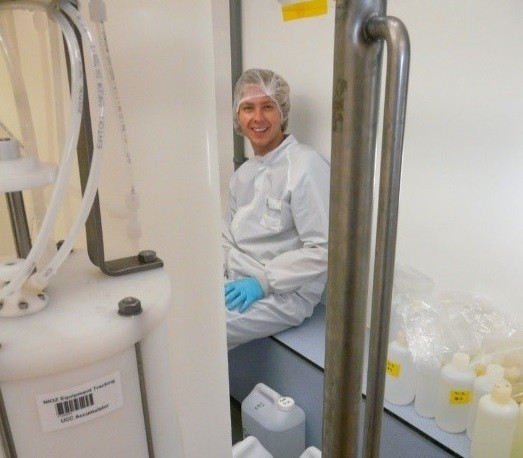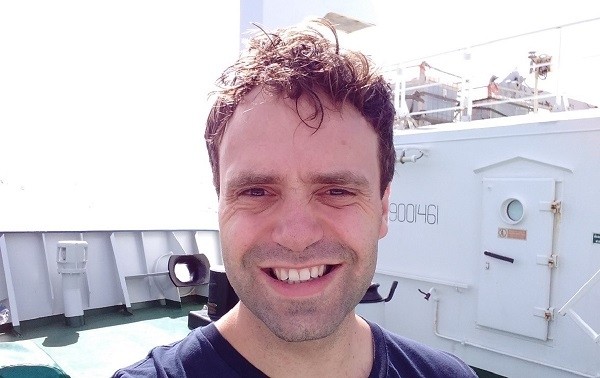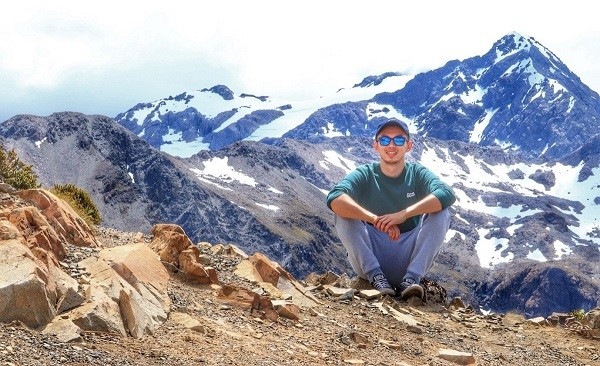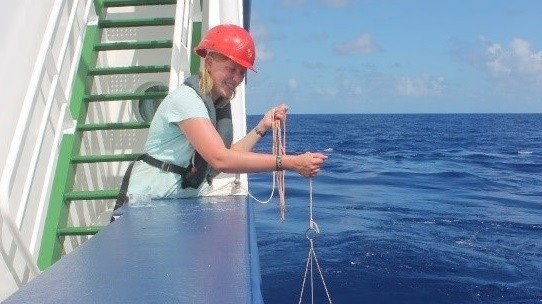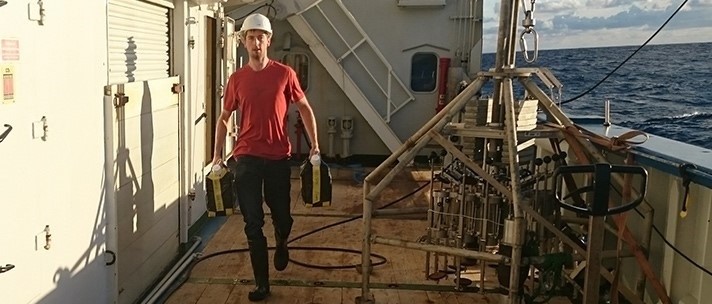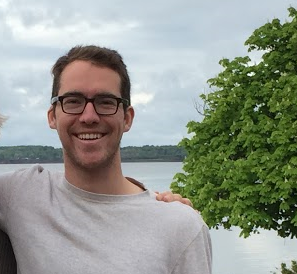Over FePhyrus: IJzer (Fe) en virus infecties op Antarctica
Klimaatverandering gaat snel in Antarctica, met name in de kustgebieden van West-Antarctica. Algen, de basis van de voedselketen in zee, hebben het rondom Antarctica al moeilijk door een gebrek aan ijzer (Fe) en sterfte door virusinfecties en worden nu ook door een temperatuurstijging bedreigd. De temperatuurstijging beïnvloedt zowel de toevoer van Fe door smeltende gletsjers als de groei van algen en virussen. Dit onderzoek wil het effect van deze veranderingen bestuderen en daardoor beter begrijpen hoe dit unieke ecosysteem reageert op de klimaatsverandering. Dit is een internationaal project, zoals eigenlijk bijna al het polaire onderzoek, dus de rest van dit blog zal ik het Engels zijn zodat het voor iedereen begrijpelijk is!
About FePhyrus: Iron (Fe) and virus infections in Antarctica
Climate change is happening fast in Antarctica, most notably in the coastal regions of West-Antarctica. Though often regarded as toxins, metals are required as essential micro-nutrients for the growth of all organisms. In the open ocean, the base of the food web is formed by unicellular algae, known as phytoplankton. These microscopic unicellular plants cannot live off just water and sunlight; they need nutrients, including trace metals such as iron. In the ocean surrounding Antarctica, the amount of phytoplankton that can be sustained is lower than expected due to the very low availability of trace metals, notably iron. In contrast, in the coastal seas around Antarctica very dense phytoplankton blooms occur every year when the sea ice opens up. These 'blooms' support Antarctica’s key higher organisms and take up a large amount of atmospheric CO2, but the extent depends on which species is blooming. Which species becomes dominant, and its ability to bloom, likely depends on the availability of macro-nutrients, iron and light, as different species have different requirements. However, much is still unknown about these requirement and the processes that control the availability and cycling of iron in the marine environment. Additionally, grazing and death through viral lysis control the standing stock of the phytoplankton. Viral lysis is a thus far understudied loss factor for phytoplankton, particularly in the Southern Ocean.
The coastal region of Antarctica is currently experiencing dramatic changes as temperatures are rising and glaciers are melting rapidly. Glaciers are a source of iron, but much is still unknown about the importance of this source of iron for phytoplankton, the spatial extent and how this is likely to change. The cycling of iron is strongly affected by the availability of iron to the microbial community, including phytoplankton. Iron solubility and bio-availability depends on the presence of organic molecules, known as ligands. The production of these ligands in turn depends on the composition of the microbial community and the share of viral lysis as source of ligands through cell death of the host (releases the cell contents into the water column). In addition to this feedback loop, the phytoplankton metal demand and thus the metal cycling via the microbial community are distinctly altered by changing temperatures. These complex interactions urge for further investigation to be able to unravel the cycling of bio-essential metals, especially iron, and assess how rapid warming affects the ecosystem. And this is exactly what we aim to do in our FePhyrus project!
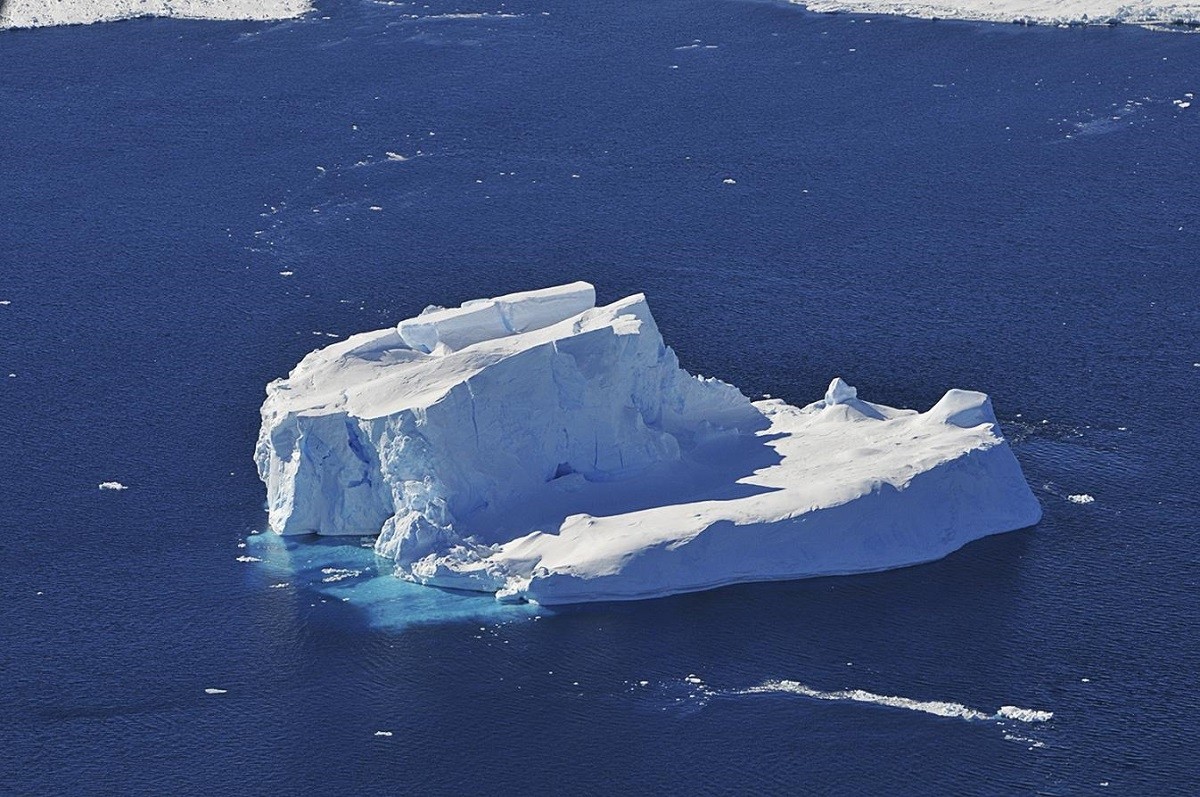
21th of February - Reflections
By Scott McCain
What an incredible experience. These past two months have been fascinating, challenging, and exciting. I am leaving with fond memories of finishing three large experiments (!), sampling 21 different stations, and collecting tonnes of samples to analyze back at Dalhousie University in Canada. I am also leaving with new friends and future collaborators, all of whom were able to withstand my honey-addiction. I will never forget the many icebergs, penguins, seals, and memories I have collected. I am incredibly thankful to the entire crew and scientific staff on the R/V Araon. Despite a cultural and language barrier, we successfully operated large equipment together; we were also able to laugh and eat ramen-noodles after a hard night’s work together. 건배 [Ganbei!]
This expedition was excellent and filled with lessons and surprise. For instance, working with an awesome trace metal group taught me not only the importance of teamwork but also the skills of trace metal clean sampling; seeing penguins and seals dancing on the sea ice added much more fun to our sampling work. After adventuring over the Southern Ocean for seven and a half weeks, the most exciting thing in my mind is that we obtained a lot of samples from scientifically meaningful transects! I cannot wait to travel back to the Royal NIOZ institute for Sea Research to analyze those samples for further results. Rob always calls ourselves 'CRAZY SCIENTISTS', I like this title as nothing interesting would happen if you do not go a little crazy, especially in science were you have to go beyond what was previously done. Sincere thanks to all who contributed to make this expedition perfect. The adventure will continue.
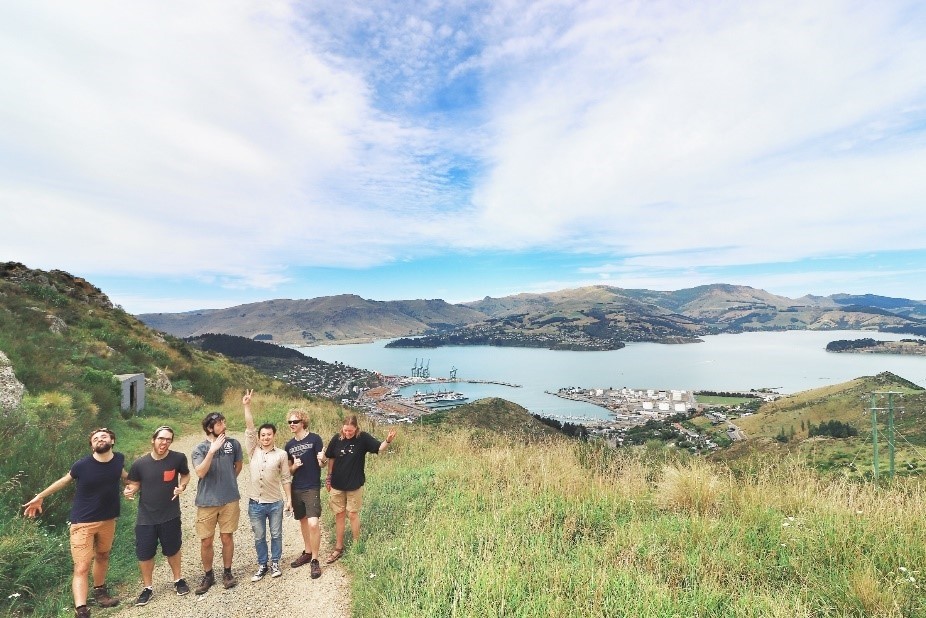
By Charlotte Eich
Finally, we have arrived back in Christchurch. The past few days have been busy for us (Sven and I) with measuring the last few fresh phytoplankton samples on the flow cytometer, cleaning and drying all we used, packing everything back into the boxes, arranging the packing of the samples that need to go back to NIOZ by courier, and sorting out the last few bits and pieces…
The last two months have been exhausting but it was also a great experience. I was able to collect over 3000 samples to analyze for my PhD. I have seen penguins. I have seen Antarctica. I have learned how to deal with constant changes in plans. I have learned how to not only work independently on my own but also how to coordinate the things I am doing with the group – and what to do better next time. In total, this cruise was a success already for learning that much and I am looking forward to the results…. and the next cruise.
By Sven Pont
A dream came through when I heard that I could join the 2018 Amundsen cruise. Now, 3 months later - after the end of the cruise - it exceeded all my expectations. Everything was more. The magnificence of the environment, the diversity of animals and also the amount of work. About the latter, I learned that I can handle so much more than I imagined possible which will help me accomplish more in the future. Thanks a lot to Corina, Anna and Rob who gave me the opportunity to develop myself as an early career scientist in a magnificent learning environment. The whole experience was really fantastic!
By Rob Middag (NIOZ chief-scientist)
What an expedition it has been! I had the honour of leading a great team of early career scientists on this expedition and due to their perseverance and dedication we have achieved what we aimed to do and even managed to do some additional stations. For me it was not the first visit to this amazing continent, but the magnificent wildlife, breathtaking scenery and sheer power of the ocean and ice are an absolute privilege to observe, no matter how many times you see it. It makes one feel very special to know you are visiting one of the most remote places one earth, one of the last places that has not been obviously impacted by human presence. Unfortunately, closer inspection tells us even the Antarctic is suffering from human activities, man made plastic and other pollutants are found and the climate is changing rapidly. The impacts of human activities on this unique ecosystem are not yet fully known, but our expedition and research will make a contribution to our understanding of Antarctica and how we are affecting it. And hopefully, more knowledge will not only lead to more understanding and awareness, but also to more action to preserve our unique planet. After all, we only have one Earth and an expedition to the Antarctic and stormy Southern Ocean definitely teaches you to respect the beauty and power of our planet!
Last but not least, I would not only like to thank my team on board, but also everyone else who made this expedition possible. The officers and crew of R/V Araon as well as our fellow scientists, notably Chief Scientist SangHoon Lee, made the shipboard work not only possible, but also very enjoyable. The Netherlands Organisation for Scientific Research provided the required funding, our colleagues at the Royal NIOZ were absolutely crucial in the preparations before, and support during the expedition, and without the support and expertise of DMT Marine Equipment and Aquahort the work would not have been possible.
Finally, we left family and loved ones behind to work in the Antarctic, where contact was restricted to one short e-mail per day. Their support and encouragement during set backs or long working hours was invaluable and kept us going so a big thank you for all you have done!
12th of February - The longest day
Most of our sampling locations (called station) were planned for the last working week of the expedition as that is the time we were in the region of our main interest, the Amundsen Sea polynya. What we first were referring to as a ‘crazy sampling week’ became actually a crazy sampling day. One very, very long Antarctic summer day as there is 24 hours of daylight here this time of year.
Coverage of Amundsen polynya
Sometimes we had some sleep but more than three hours was considered to be luxurious. Before I had time to dream about all the penguins I saw that day, Rob would come into our room waking us up with the (in the end not so much appreciated) 'CTD in one hour guys'. But most of the time we did not had to worry about Rob waking us up because we would already be at the next station before we would even finish sampling the water from Titan in the sampling container. But the very good side of this (very) long sampling day is of course the amount of data we collected! Now that we are on our way back and cleaning everything up I have the feeling we can be proud of what we achieved. We have a good coverage of the Amundsen polynya and are coming home with five stations more than originally planned (expedition plans have to tendency to change every now and then).
Different shades of blue, endless ice shelfs and most importantly: sea-ice
Now that we have had some sleep again and are coming close to New Zealand, it’s a good time for some reflections. I can only say that I am astonished by Antarctica. Every single day we saw beautiful new landscapes (and sometimes old landscapes). Icebergs in all their different shapes and color, I was not aware that there are so many different shades of blue, endless ice shelfs and most importantly: sea-ice.
Adelie penguins
Knowing that we would reach sea-ice on a specific day was knowing you would have a good chance of meeting my favorite animals; penguins. Adelie penguins are hilarious creatures when on the ice, seeing them awkwardly walk, falling on their belly, do a bit of belly sliding to later get up again is what keeps everybody happy during the sampling. I’m still enjoying the Korean food and yesterday there was, for the first time, even a Karaoke evening. Which completed the whole Korean experience! So I can honestly say I enjoyed this trip a lot, but for now it is time to go home!
Mathijs
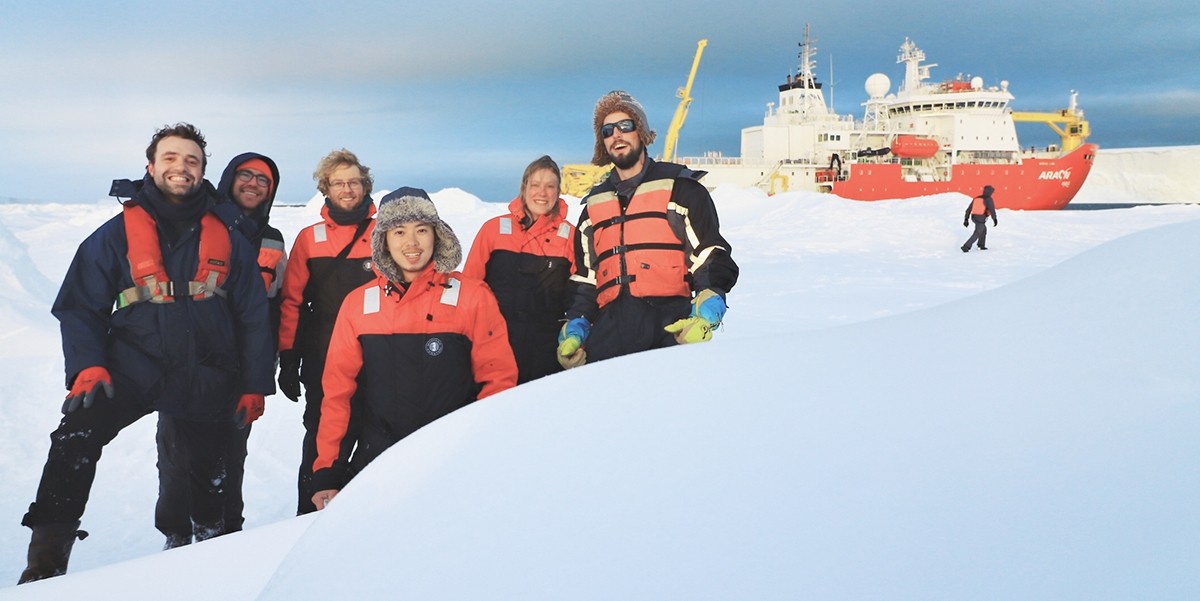
6th of February - Trace metals
It has been a while since our last update as we were so far south that tele-communication became really slow and we were working around the clock collecting and processing samples. We collected our samples using Titan, the 'ultra-clean' sampling system for trace metals and biology. Because trace metals occur at vanishingly low concentrations, traditional sampling systems cannot be used as the metal in these systems or the cable it hangs from, would contaminate the samples.
Our Titan system is deployed on a Dyneema, metal free, rope and Titan itself is made out of titanium and plastics, allowing us to collect uncontaminated samples. The grey samplers (grey tubes) used to be white, but were changed to keep the light out as the phytoplankton did not like the sudden exposure to light when the system came out of the water. The entire sampling system is parked inside a clean room container. The air inside of this container is filtered to keep the environment free of dust and other contamination and we dress up in dust free clean room suits when collecting our samples from the Titan system.
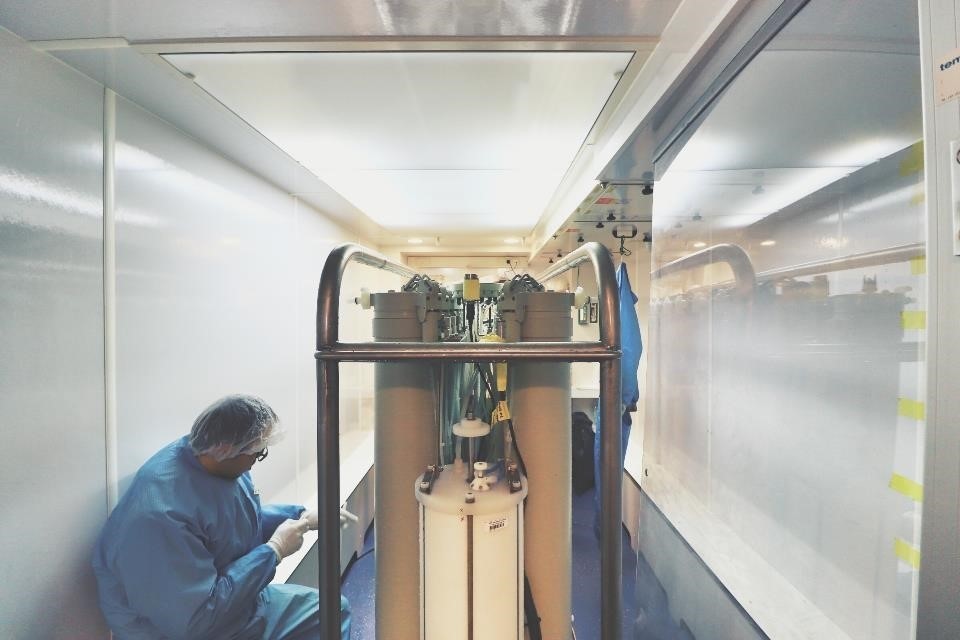
Identify phytoplankton
We collect samples for metal and nutrient concentrations as well as samples to identify the phytoplankton community size, composition and the role of viruses. We test if there is iron limitation of phytoplankton growth by growing phytoplankton with and without added iron. Additionally, we grow them at the 'normal' seawater temperature around here, a balmy -1.6° C, as well as two degrees warmer to assess the effects of warming temperatures in this region. For this, special incubators with a sophisticated temperature control system had to be developed as it is no easy feat to keep a large volume of water at an exact temperature. During sunny days, the incubators made of polycarbonate plastic, act like a greenhouse and would warm up significantly without cooling. But when the sun disappears and the wind picks up, the temperatures plummet, especially the perceived temperature due to the wind chill, and the system needs to be heated to maintain the set temperature.
Special incubators
Such as system did not yet exist, but John Seccombe from Aquahort ltd in Auckland was up for the challenge! His company built us two temperature control units while the NIOZ workshop built the incubators, big double walled square plastic tubs with a lid and water inside that circulates through the temperature control units. On the outside, screens are attached to control the light level an inside these incubators, we place our samples to incubate, some are small 250 ml bottles, but the majority are 20 L plastic water bags called cubitainers. Twenty of these have to be transported daily from the helicopter deck to our clean container two decks lower, quite the exercise! Luckily we often get help from our colleagues on the ship and many hands make it a lot easier.
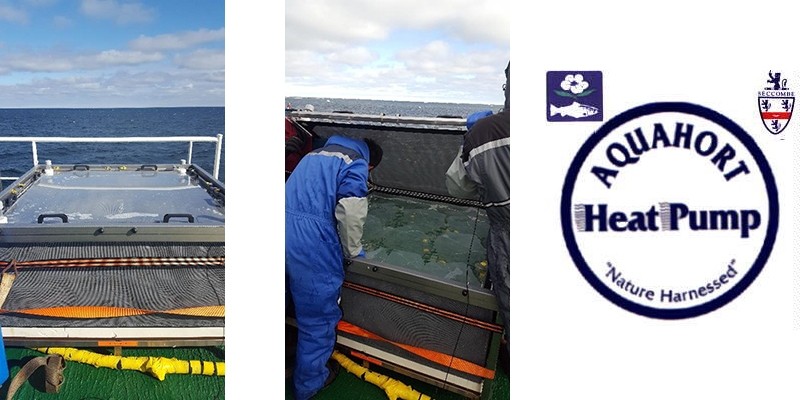
Incubator on the helicopter deck of the Araon. After getting the samples we put them in the incubator.
Obviously we could test if the units could chill down to the right temperature, but not under Antarctic conditions on deck of an icebreaker so this expedition was the first real test! And we did encounter some problems in the beginning of the expedition, but fortunately John Seccombe from Aquahort and Don Trigg who supplied the heatpumps, were very quick to response and with their remote help we were able to keep the incubators running and maintain our target temperatures. So a big thanks to John and Don for all your support during and before this expedition!
Rob Middag
22th of January - 'Which animals am I going to see today?'
After the patient was brought to New Zealand, and we did some quick grocery shopping in Christchurch's harbour town Lyttelton, we could continue our journey to Antarctica. With yoghurt, cheese, apples and ingredients to make fresh yoghurt by ourselves in possession, we could happily continue the expedition with some home-familiar food. By this, I do not imply that the food here on board is not nice! Yes, the food served quite often is seafood and spicy, but the taste is nice and the amount of new experiences in the world of food are plentiful, such as little octopus, mussels, squid, oysters, little fishes, etc. It opens a new world to me, besides exploring the most southern piece of the planet.
About that, so far every day was a day which I thought: 'Which animals am I going to see today?' It is really awesome! In the middle of the ocean there were brown-whitish Petrels and Albatrosses. When we came closer to the sea ice they were exchanged by totally white Petrels, Crab-eater seals and Adélie penguins and today, as we arrived at the edge of Getz ice shelf, we saw a large number of sprays arising above the water indicating the presence of a group of whales or dolphins.
What we see is all about the ocean surface and above, but for us it is a research expedition about what is going on with life beneath the surface. Instead of using a brochure about Antarctic life, we use a professional and scientific approach to analyse microbial life in the iron limited Southern Ocean. For this, we spend many hours in the labs to unravel the hidden secrets.
Of course, we can combine both, when we are handling our samples that are in incubators on the deck. We can work on our experiment while being euphoric when we see a seal, penguin or, if we are lucky, both animals at the same time! In our experiments we expose the microbial life that forms the bottom of the Antarctic marine food web to different treatments such as varying temperatures and concentrations of iron. This way we hope to gain insight in the effects of climate change that is affecting this part of the globe strongly.
Sven Pont
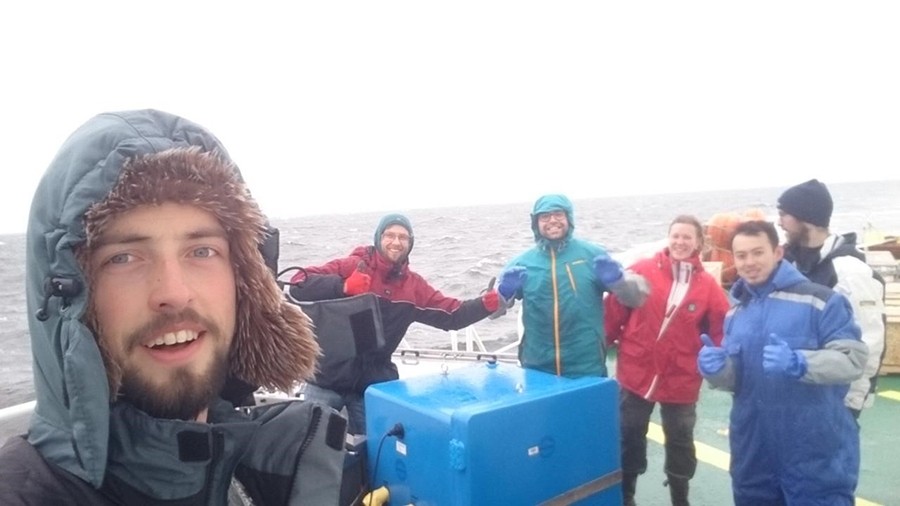
12th of January - Sailors law
We started the cruise of well despite some obstacles we had to overcome in the beginning. The Titan sampling system needed some attention, but due to the very fast and useful response from our colleagues at NIOZ despite the fact they were enjoying Christmas holidays, meant this was swiftly dealt with. At the first station the rope used to deploy our CTD sampling system came off the winch winding system, due to bad weather water entered the air conditioning system of our analytical container and the temperature control for one of our incubators did not work at first. However, we managed to get everything fixed.
As the first three stations went well, and we had just managed to prepare everything, we were ready and all motivated for a night shift to get our samples and start our first bio-assay on the fourth station!
Then Rob came in and announced: "We have a situation – we are going back to Christchurch".
One very unfortunate crewmember has developed a medical issue and needs an operation as soon as possible. So, the Araon made a 180° turn, following the old sailors law, that a life on sea is priority over everything else. Therefore, instead of preparing for the next few stations, we started cleaning all our bottles for the transit time to Christchurch and then back to Antarctica (about 14 days altogether).
It is a strange situation on the ship now, as there are all those scientists, prepared for hard work, who now have not much to do – but we will not lose out good mood and we are all looking forward to coming back to Antarctica and continue our work there!
Right now we are taking some samples along the transit, by using the ships seawater taps, to collect information about changes in iron binding proteins, stress proteins and abundance of phytoplankton, viruses and bacteria.
Charlotte Eich
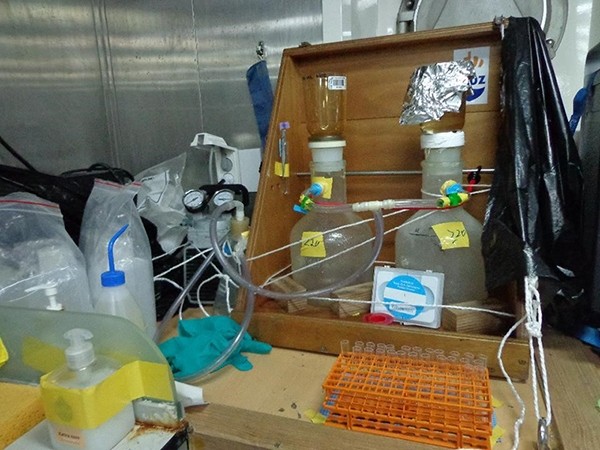
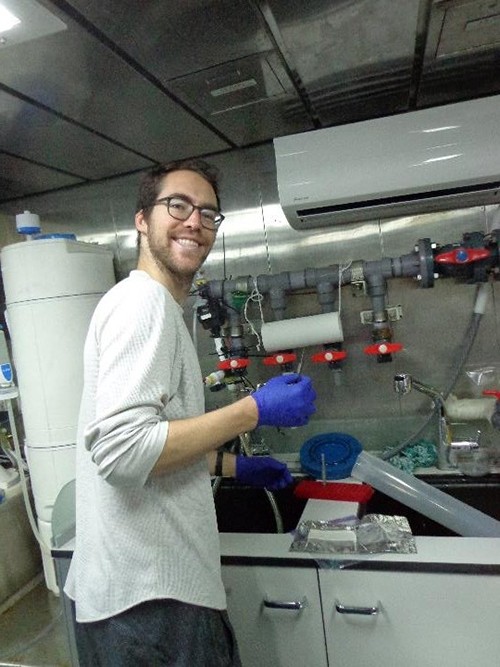
4th of January - Christmas and New Years on the R/V Araon
Holidays at sea are unlike any other: they are a blend of cultures and traditions fueled by hard work and a rare beer (normally only reserved for a Saturday night). So far, we have experienced both Christmas and New Years Eve on board the R/V Araon. We had brought some Christmas decorations to give our labs a festive look. This worked out quite well for the biology lab but the trace metal lab was a bit harder to decorate, as we cannot introduce any contamination there. After long days sampling and working on various sampling instruments during the day, everybody is happy to have an excuse for a party.
On Christmas, we all gathered in the galley at 8:00pm, as the party was scheduled from 8:00-9:00pm. We arrived impressed by the spread of cheeses and fresh fruit – I’m particularly fond of the Korean Pears (‘Pae’) and Asahi beer (‘Maekju’). This was the first time all the staff scientists got to gather in a non-work setting, so it was fun to get to know everybody on a more personal level. Needless to say, the Christmas party didn’t finish at 9:00pm.
New Years Eve was similar, but with the introduction of a new Dutch tradition that I was pleasantly surprised by. ‘Oliebollen’, or basically fried Dutch doughnuts flavoured with raisins and shredded apples, are a New Years Eve tradition in the Netherlands. The crew were kind enough to let the trace metal team into the kitchen and cook up some of these desserts. I am definitely going to try and introduce this treat back in Canada!
Until next time,
Scott
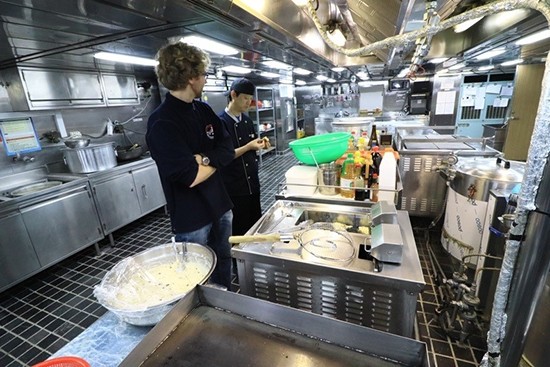
Preparing for fieldwork in the Antarctic that almost never happened….
The 21th of December we boarded the research icebreaker Araon from the Korean Polar Research Institute where we will join the team led by Dr. Sang Hoon Lee for an expedition to the Amundsen Sea, Antarctica. Given this remote destination, we need to be sure we have prepared meticulously, everything needed will have to be brought and for our work, we need some special equipment.
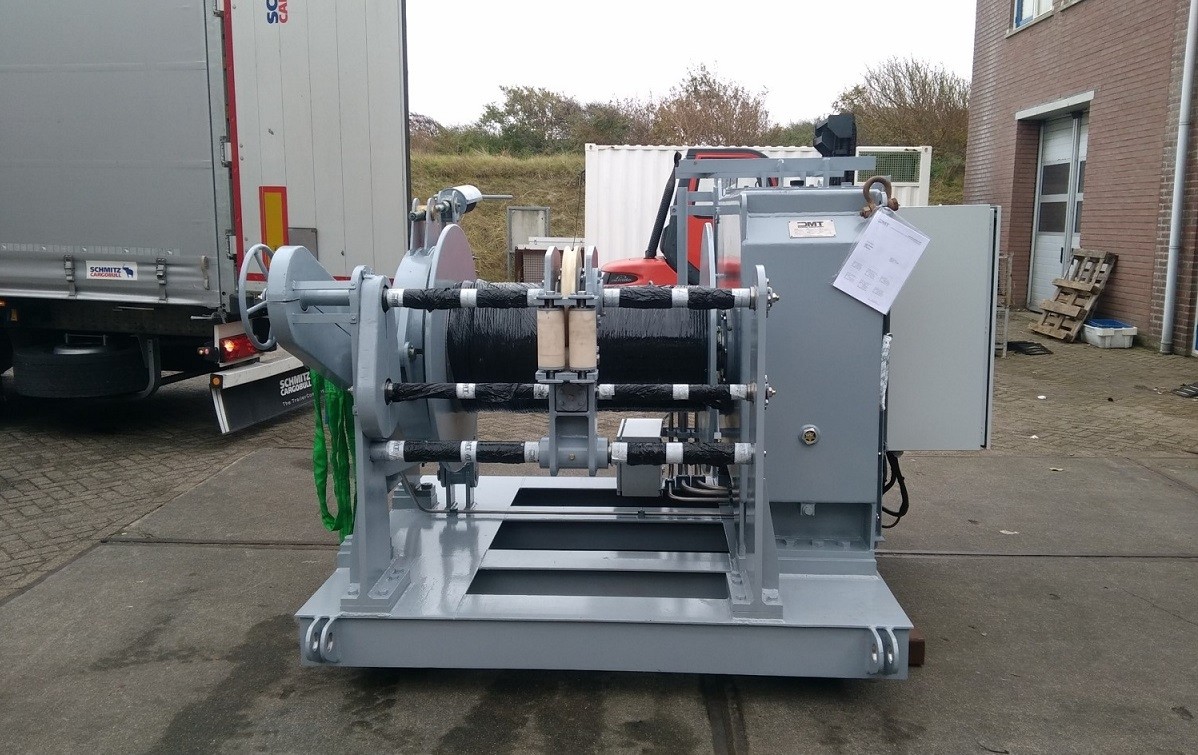

DMT marine equipment came to the rescue: big THANK YOU!
Sampling for trace metals is no mean feat, the ship and machinery are made of metal and despite all the maintenance, there is always some rust due to the salty ocean water. The concentrations of metals in seawater however, are absolutely minuscule. In the case of iron (our main interest), the concentrations are equivalent to 1 paperclip dissolved in 40 billion liters of seawater, or 15 Olympic sized swimming pools! So one can imagine utmost care needs to be taken not to contaminate the samples, otherwise all we do is measuring how much iron we added to our sampled water, rather than the actual concentrations that we are interested in. In a later blog we will feature Titan, our trace metal clean sampling system that can take samples at different water depths in the ocean. Such a system needs to be deployed from the ship using a winch and a cable. The cable will be attached to Titan, and cannot be a steel cable as often used, this would contaminate our samples. Winches are present on the Araon and widely used in marine applications, so we did not expect this would pose a problem. However, time passed and one option after another was discounted for various reason, winch not powerful enough, in the right location, unable to deal with trace metal clean cable etc, etc. Until there was no option left and time was running out. Luckily at the very last minute Piet ter Schure and his team from DMT marine equipment came to the rescue. They worked around the clock and pulled off the impossible; they constructed a suitable winch in little more than a month and managed to deliver from their factory in Romania to Texel just before the transport of all gear had to leave for Christchurch in New Zealand. So a very big THANK YOU to the entire DMT team, without your efforts this expedition would have never happened!
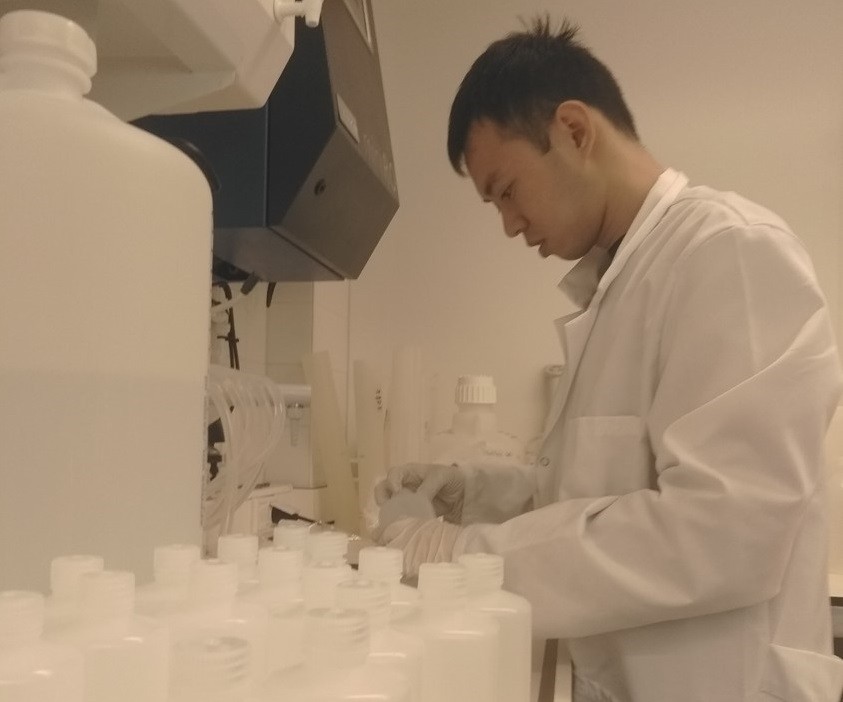
Bottled up
Beside our equipment, we also needed to prepare many sample bottles for the collection of our seawater samples. Because of the extremely low concentrations of trace metals, this is quite a challenge. To be sure the plastic bottles do not contain any trace metals anymore, they need to be cleaned carefully using different cleaning steps. This means before a bottle is ready for use, we need to soak it in soap, rinse it five times with MiliQ water, soak it in hydrochloric acid, rinse it five times with MiliQ water and then fill it with a low concentration of nitric acid for storage. Considering that the first two steps takes at least half a week each, and knowing that we take hundreds or even thousands of bottles you can imagine this is a very time-consuming process, especially since only a limited amount of bottles fit in the heated soaking baths. Thus while iron can be the limiting factor for the Antarctic marine ecosystem, time was the limiting factor for us during preparation. Therefore we had to work for almost five weeks non-stop to get everything ready in time for shipping everything off. Of course the bottles are not the only things that we had to pack, also chemicals, all the consumables, etc., etc., needed to be ready and packed in time. This was in some cases very challenging due to unexpectedly long delivery times. Let’s just say we did not only have clothing in our checked in luggage flying here, but also some bottles, filters and even a heater J. Now, a few days before our departure we believe everything is packed and we are ready to start to explore the Amundsen Sea!
